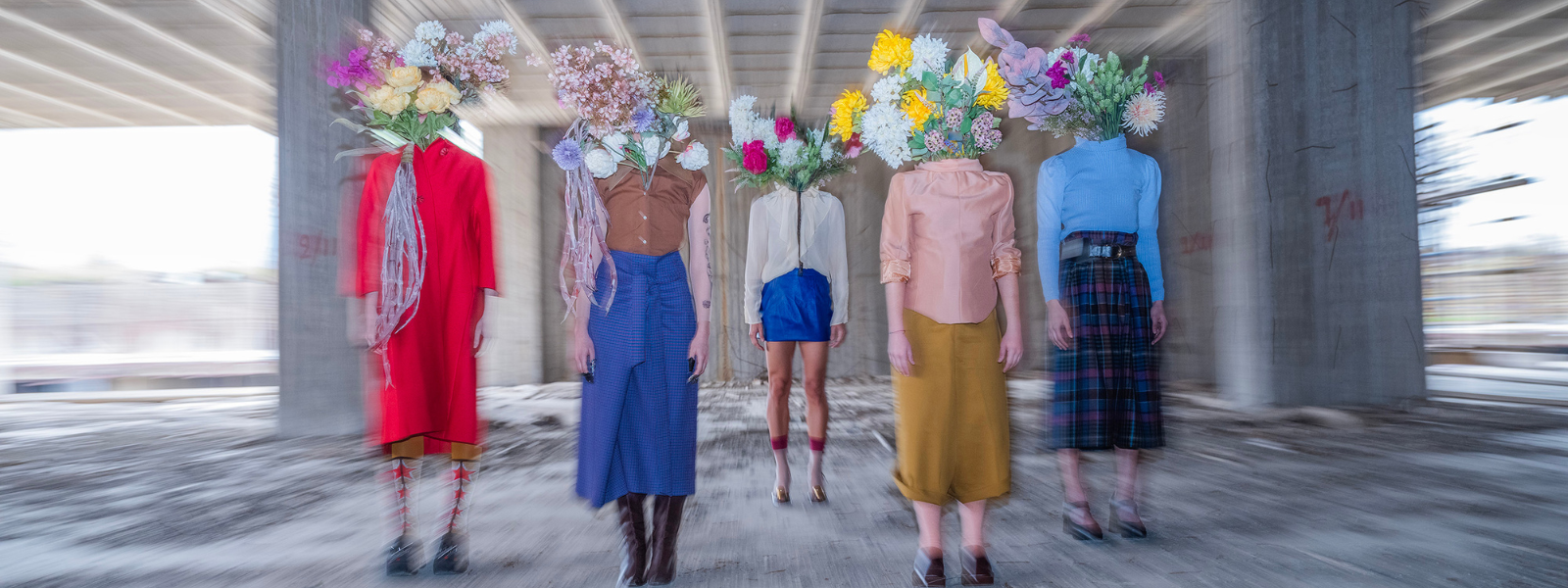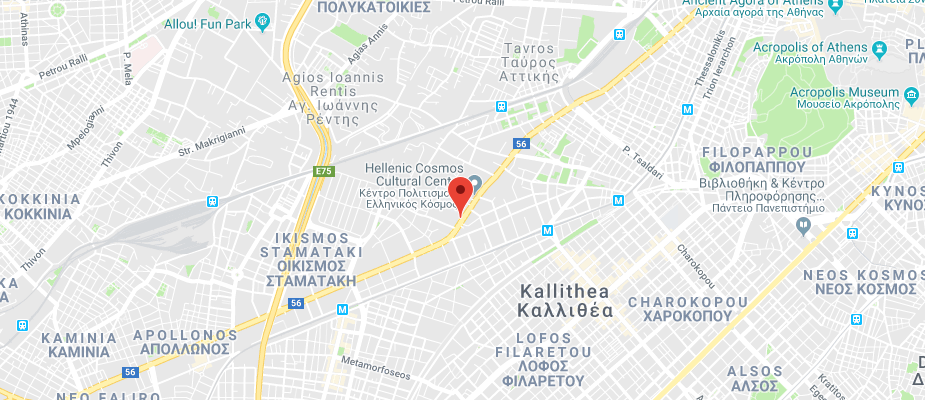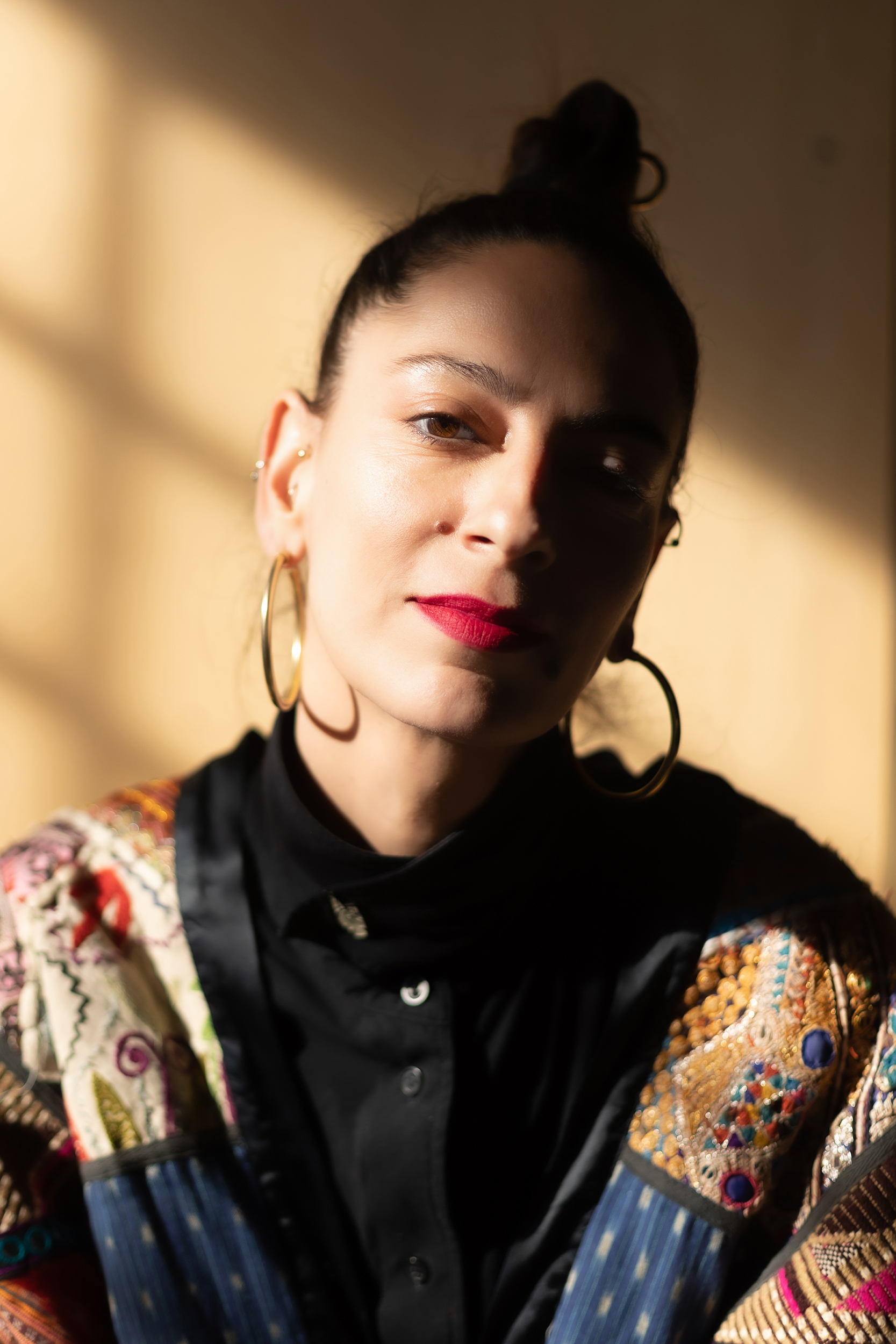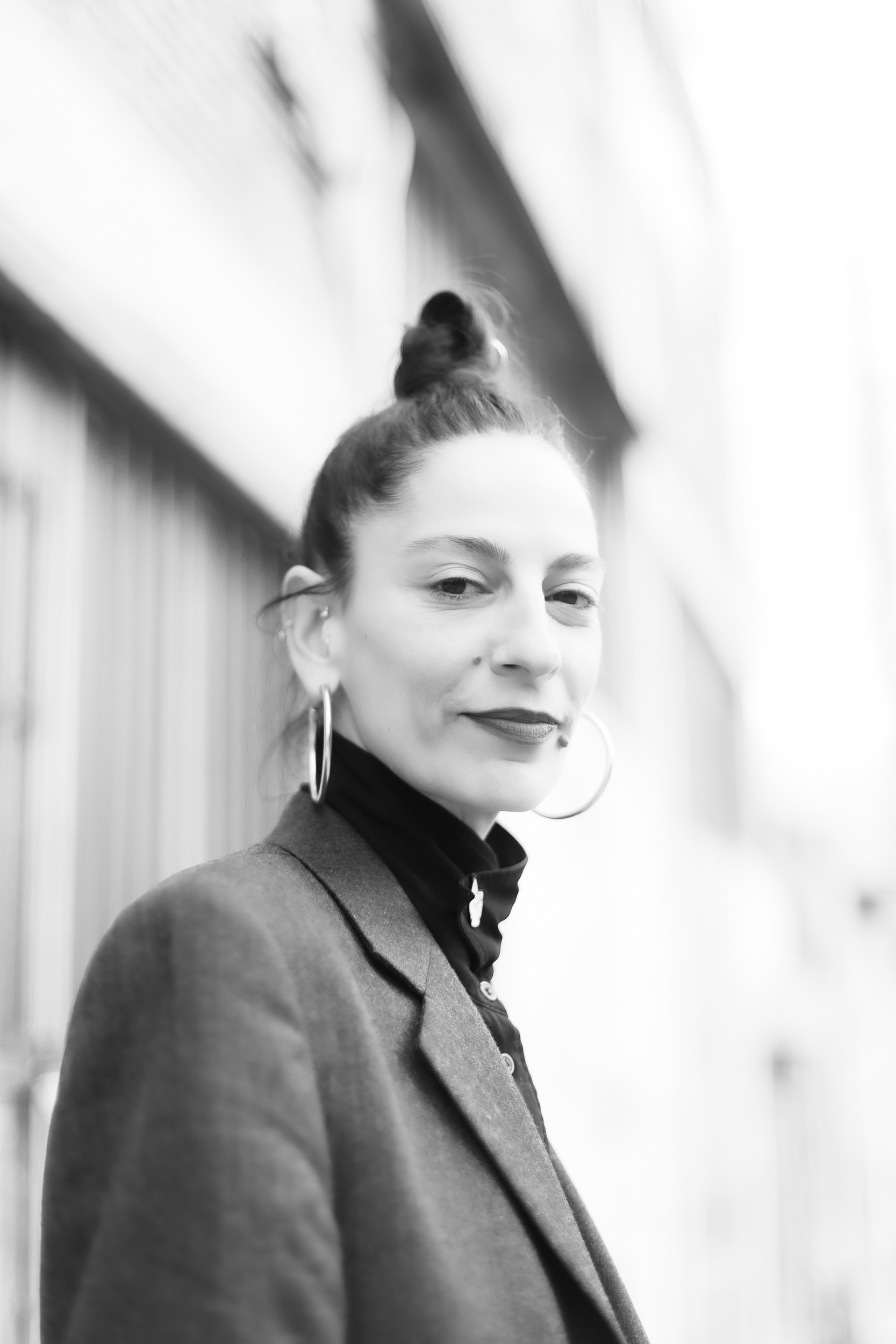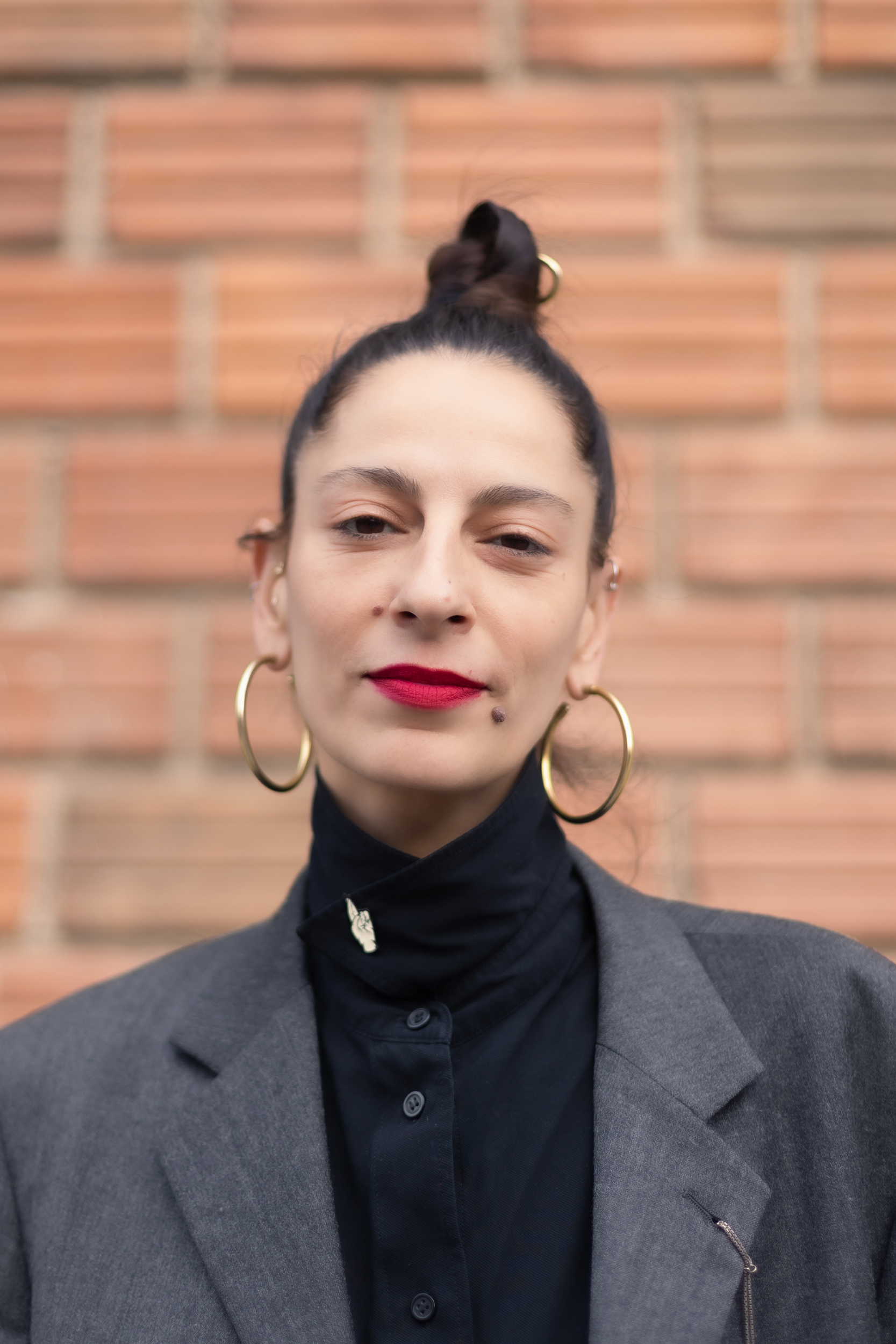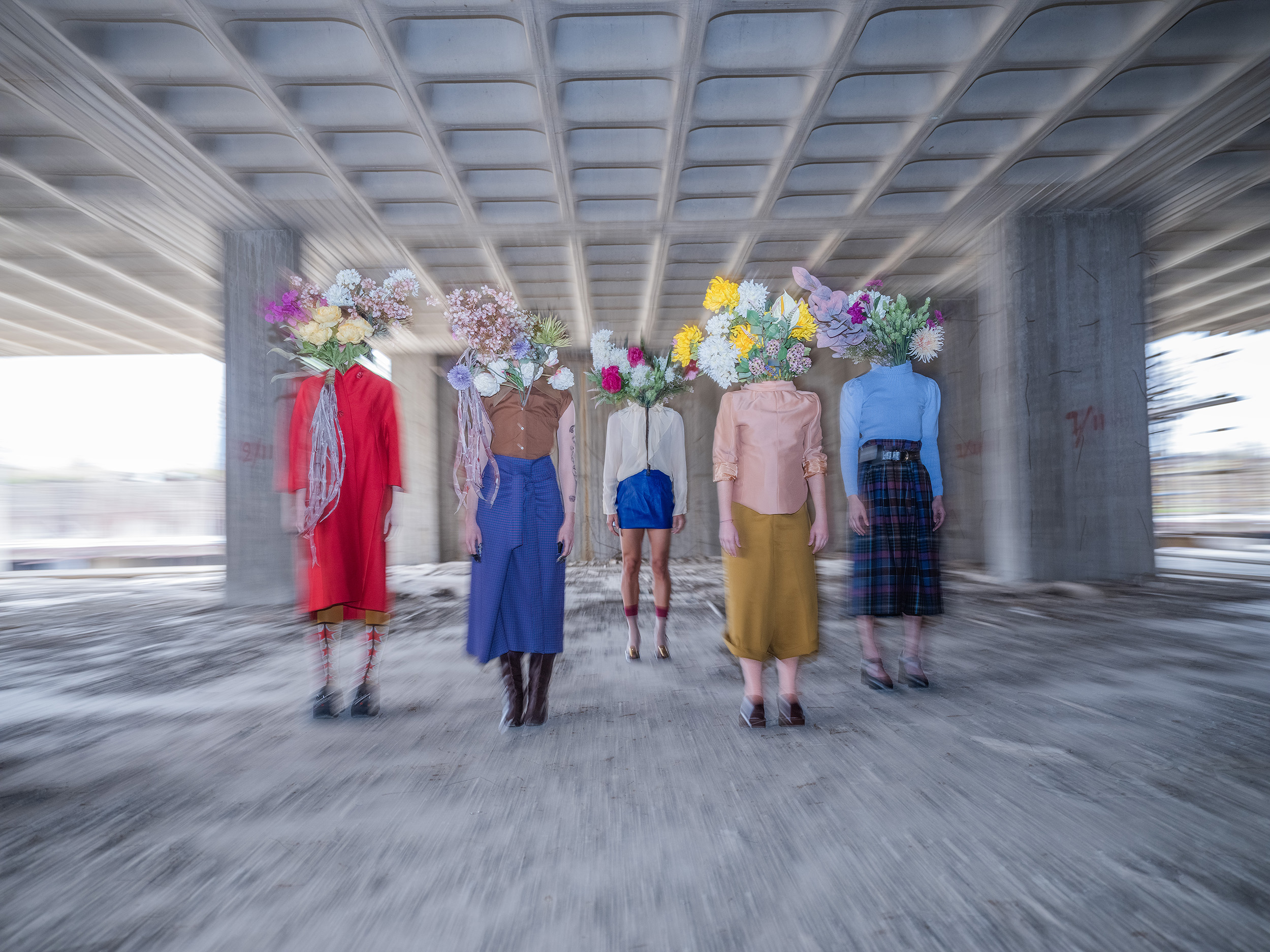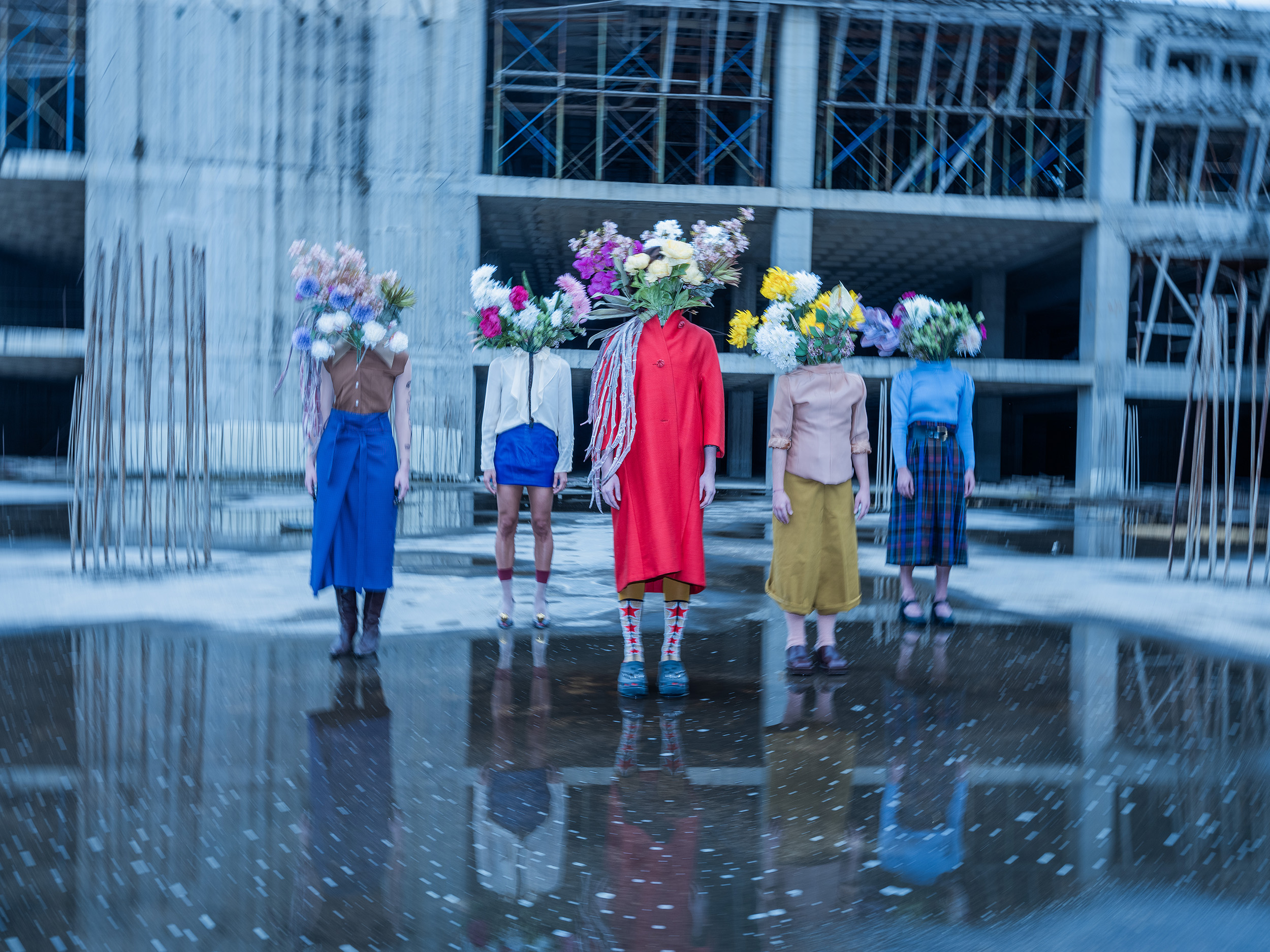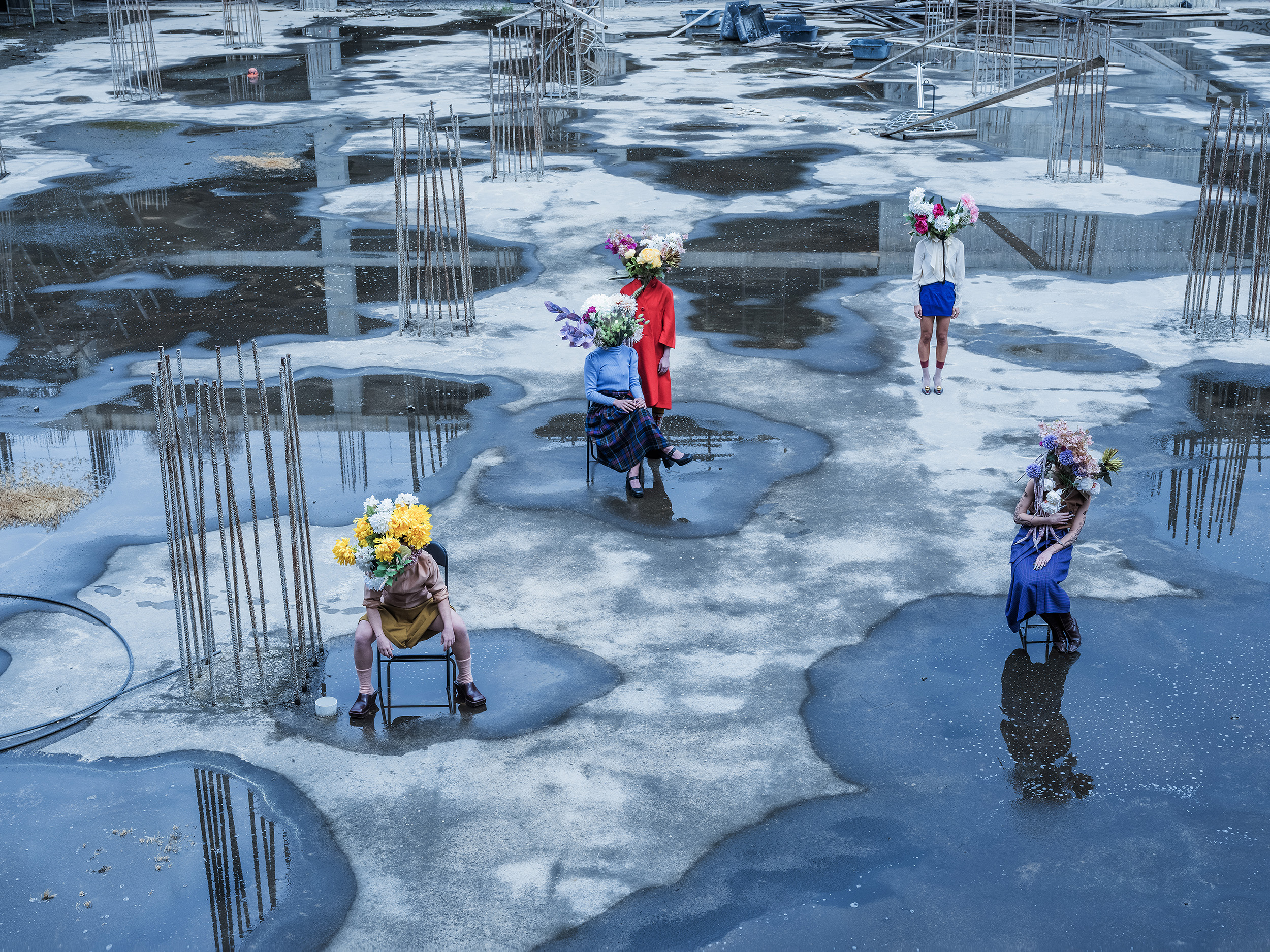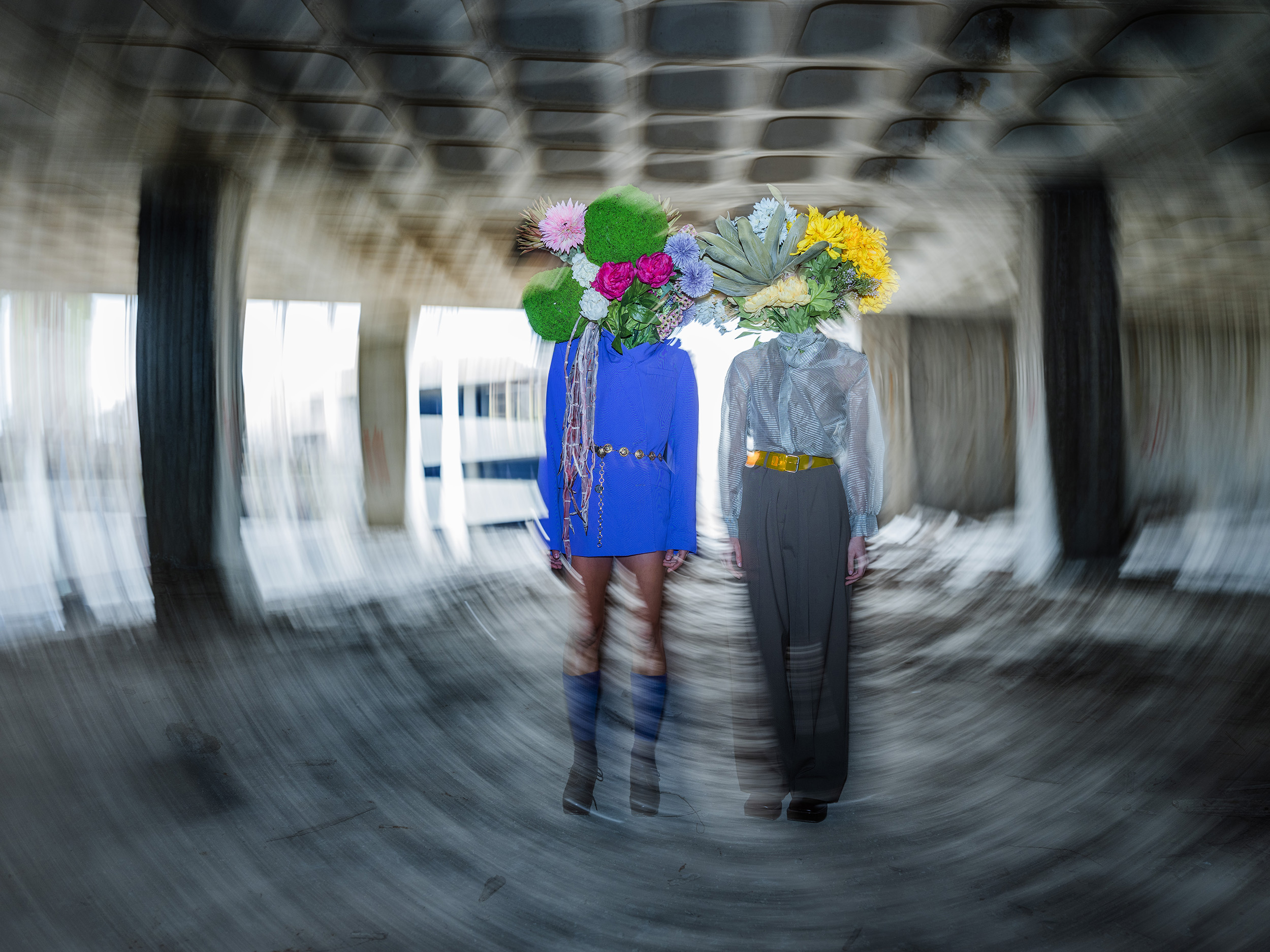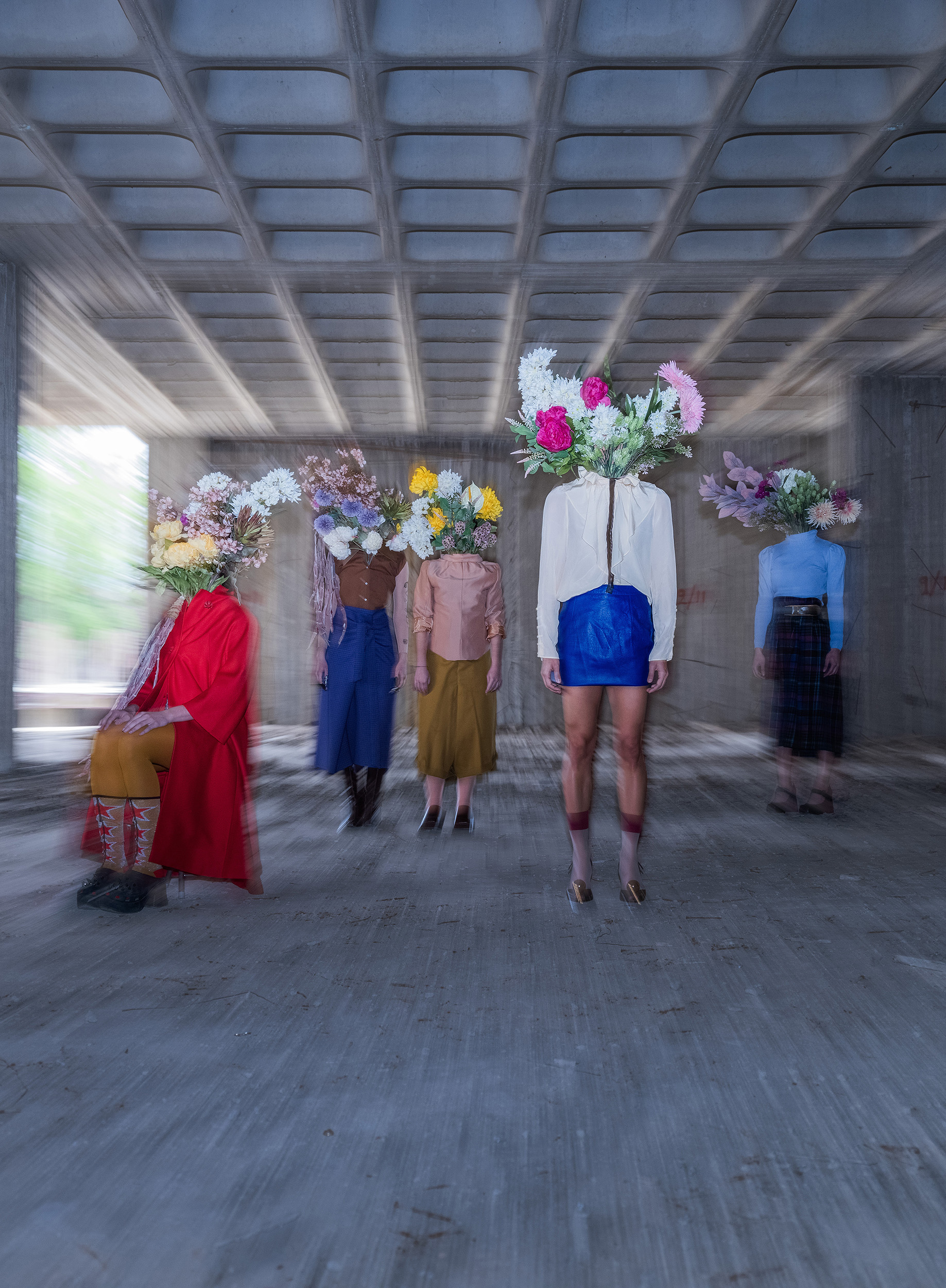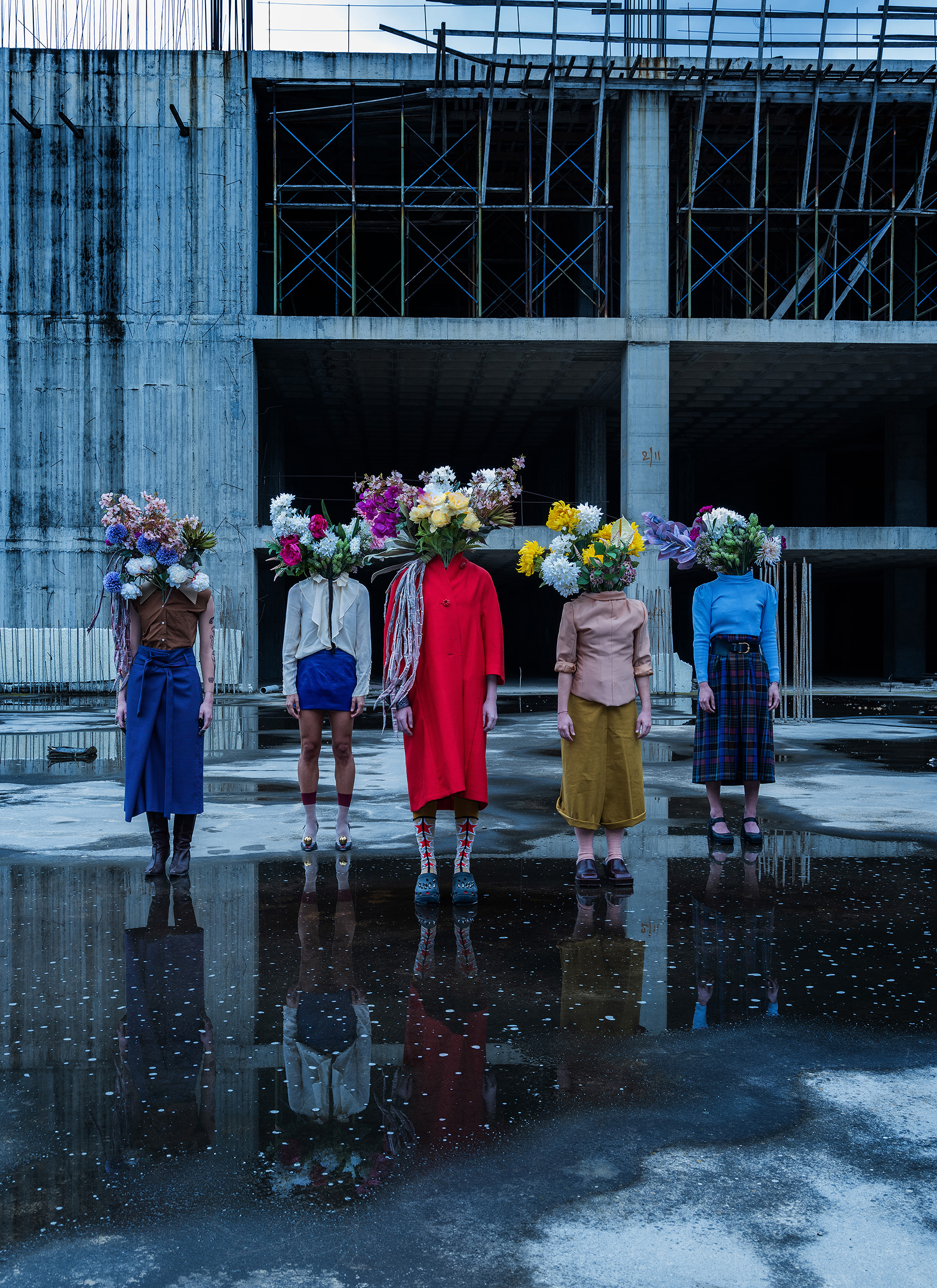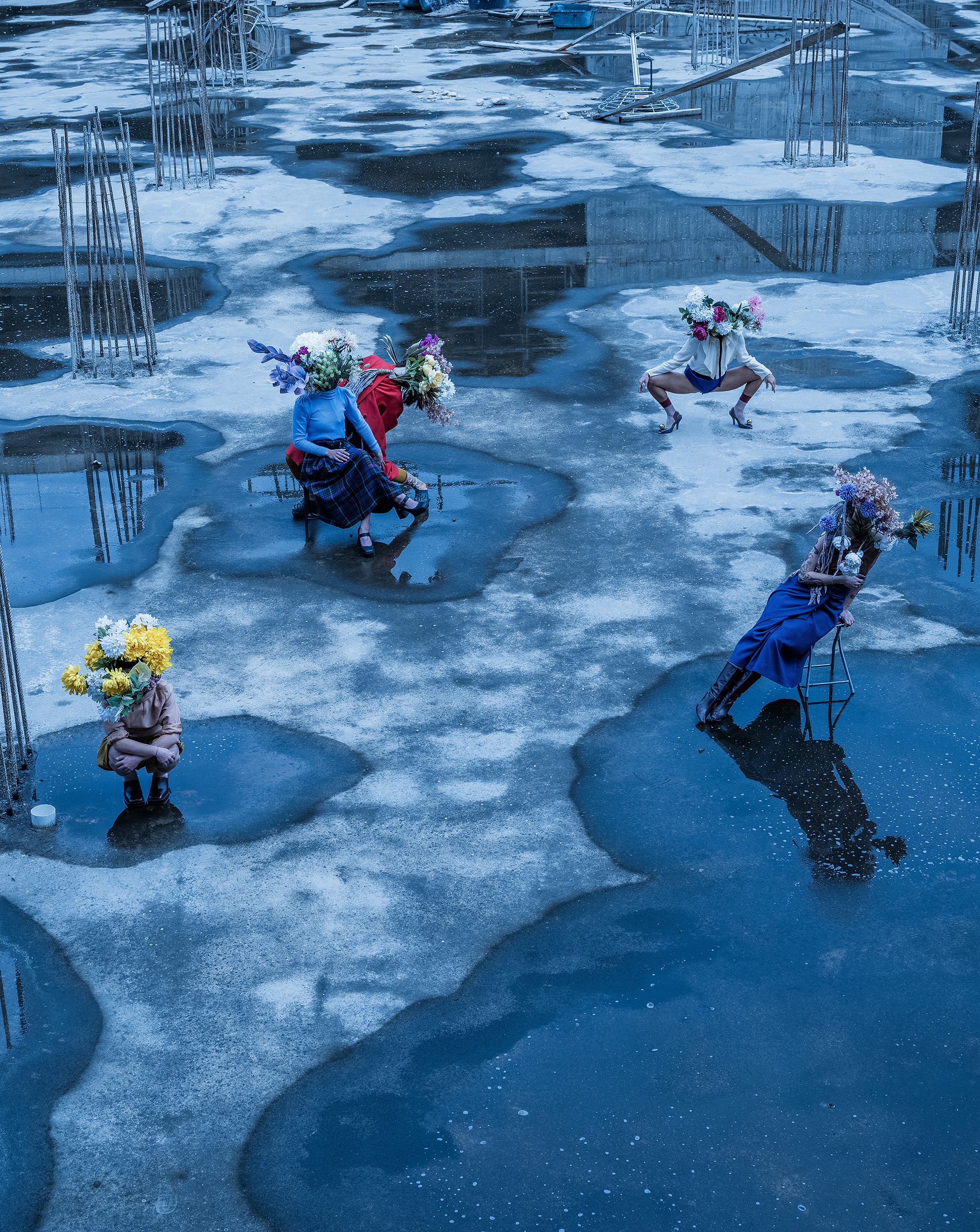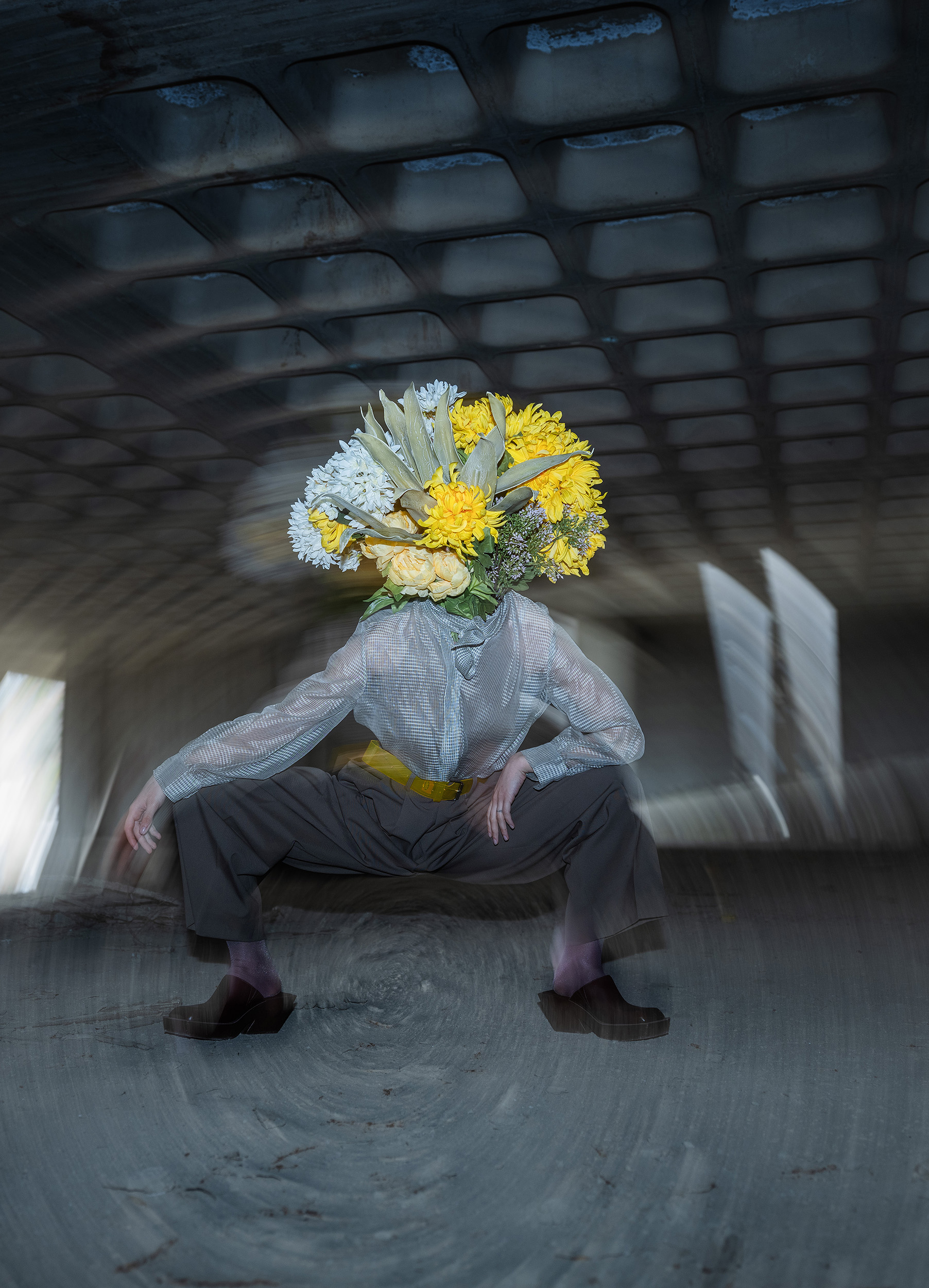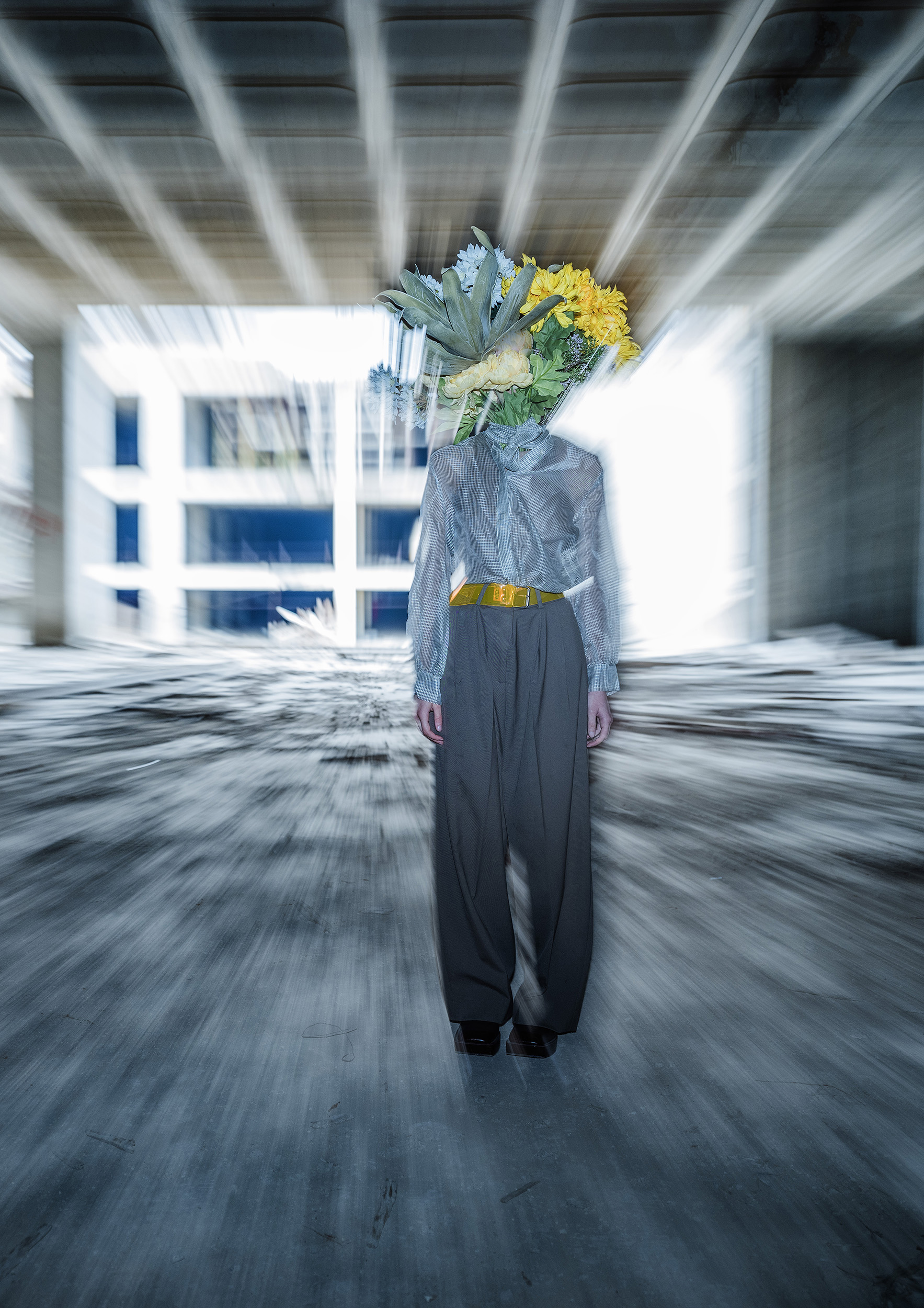Since the early feminist movements, the trajectories, transgressions, deviations, registers, and events inscribed upon women’s bodies and minds have provided painful yet vital materials in life and art.
The new work by Patricia Apergi, a choreographer of significant influence on the global dance realm, focuses on women’s struggles throughout the centuries. According to the creator, “It is a journey to places real or dreamlike, to all those identities attributed to women as well as those they accepted, to the failure or success of manipulation.” A sequel to Planites (2012), the previous production by Aerites Dance Company, Hystory unfolds through a predominantly female perspective, drawing its meaning from the interplay of concepts embedded in its title: “hystera” and “history.” In ancient Greek, “hystera” means womb, a term that also gave rise to hysteria, long archetypically associated with the female gender. More specifically, a once-pervasive belief held that the uterus could wander within the female body, causing physical and psychological complications, from dyspnea to various crises and erratic behaviours. This theory, known as “the wandering womb,” reinforced the notion that women were, by nature, prone to emotional instability and outbursts.
In Planites, a work that featured an all-male cast, the team explored the street as a site of wandering and searching for a better tomorrow, a space of integration, fusion, and encounters with the Other. Hystory—which could be seen as its female counterpart—shifts the focus to today’s women: those misled in their journey, those who refused to submit, whose paths were obstructed, who resisted being “good girls.” These women, demonised yet glorified for their defiance, become the wanderers of the contemporary condition.
The performance may include the use of strobe lights.
grape – Greek Agora of Performance, the successful Agora for the Greek Performing Arts of the Athens Epidaurus Festival, returns for its third consecutive year! Providing a platform for Theatre and Dance creators to showcase their works to representatives of international festivals, cultural institutions abroad, and the wider public, grape aims to systematically promote Greek artistic vision to the international Theatre and Dance scenes.
As part of grape 2025, 8 performances are featured in this year's programme from July 21 July 24.
Concept—Choreography Patricia Apergi
Music Vassilis Mantzoukis
Dramaturgy Roberto Fratini Serafide
Set design Evangelia Therianou
Costume design Alegia Papageorgiou
Lighting design Nikos Vlassopoulos
Associate lighting designer Sofia Alexiadou
Assistant to the choreographer Savvina Xhaferaj
Assistant costume designer Nikoleta Anastasiadou
Assistant to the set designer Genevieve Athanasopoulou
Sound engineering Christos Parapagidis
Production technical coordinator Nikos Charalambidis
Executive producer Polyplanity / Yolanda Markopoulou, Vicky Strataki
International tour Plan B - Creative Agency for Performing Arts Hamburg
Cast Evini Pantelaki, Caterina Politi, Myrto Stolidi, Mariana Tzouda, Eleanna Zoi
Understudy Nefeli Kafentaraki
HYSTORY
The title of this work is a fusion of words and terms that were chosen to elicit multiple associations and layers of meaning regarding the performance’s theme. The title is shaped through the interplay of the following words:
1. Hystera, the ancient Greek word for womb, from which the words “hysteria” and “hysterical” derive. For centuries, this came to be the predominant terminology through which women were classified whenever they felt or acted differently, all the while demanding another kind of independence. This served the purpose of pathologising, institutionalising, “curing,” imprisoning, and, overall, punishing them for stepping outside any era’s accepted norms. To avoid acknowledging the different pulse of their existence, we devised clinical labels to stigmatise their strength as an utter loss of control over their own body.
*** In ancient Greece, Hippocrates and other healing practitioners of the era believed the womb could “wander” within the female body, causing physical and psychological complications, from dyspnea to seizures and erratic behaviours. This theory, known as “the wandering womb,” reinforced the notion that women were, by nature, prone to emotional instability and outbursts.
2. History, as in story. History is indeed another form of narrative, many times staged, or a myth, many times soaked in blood. And it has mostly been told by men. Strange how, in this performance of hysteria, women come across both as invisible and hyper-visible. Therefore, their actions came to be seen as the exact opposite of agency, while their truths were systematically stripped of authorship.
3. Hysteros, meaning that which comes after, the next, the last, and, as an adverb, later. In this piece, it refers to the wanderers (“planites”) after…or after their first version.
4. hystérēsis is any journey that strays too far from where it “should” go; it is the complicated way of always being late; it is also a strategy to carve out more space, more movement, more routes, through a limited and narrow space.
Hystory is a continuation and a dialogue with the previous work of Aerites Dance Company, Planites (2012), only now seen through a female lens, shaped by women's experiences and volition. In Planites, a work that featured an all-male cast, we explored the street as a site of wandering, of longing for a better tomorrow, of mingling, of foreignness, of Otherness, of integration and assimilation, of violence and exile. In Hystory—which could be seen as its feminine counterpart— the wanderers (“planites”) are today’s women, the global citizens, those misled in their wandering. The ones who refused to submit. The ones who were not granted an open road or whose paths were obstructed. The ones demonised or glorified for their defiance. The ones who barely whispered “I want to” before being silenced, before being forced to remain “good girls”.
From contemporary feminist, anthropological, political, and social insights to the early feminist movements and the overall century-long struggles (Silvia Federici, bell hooks, Adrienne Maree Brown, Saidiya Hatman, Ursula Le Guin, etc.), the trajectories, transgressions, deviations, inscriptions, and incidents written upon women’s bodies and minds have provided painful yet vital materials in life and art. New or eerily familiar social phenomena that recur obsessively call for interpretation, demanding at the same time roads to disseminate, voices to be silenced, anguishes to turn hysterical, and uproars to calm down.
In Hystory, planites (“wanderers”) are those who do not stop. The ones propelled forward by necessity. The ones who were left behind and never allowed to begin the journey—but were never misled. The ones who do not need to perform gender, the ones who archive in time banks, who dig and hide in gardens and asphalt anything they need to preserve: data, seeds, labour, legends, chants, and dreams.
The work is our very own wandering in places real and imagined, in all these identities that were conferred on women or those they accepted themselves, in the failure or success of manipulation, in everything missed by them, by us, in everything that remains to be said and move a little bit forward.
Inside the social, semiotic, sexual, and clinical frameworks they were forced to inhabit, women have learnt countless ways to wander in confined spaces. They mastered so many different modes of inner migration. They invented so many subtle strategies of struggle and resilience. And, above all, they learnt how to hide in plain sight, how to observe while being observed. Perhaps this so-called hysteria was one among these weapons, one of these migrating paths. Alongside dance and storytelling—all of them paths of wandering.
Because we love telling stories.
The ones we tell our children at night, to lull them to sleep. The ones we never invented, but rather lived through. The ones necessity forced us to face. The ones nature demanded we endure.
The ones we were avenged for.
We love telling stories.
About the hysteria that drives us to arrive somewhere. About our need to reach closure. About the beauty of tending to ourselves. About the supreme grace to give birth to ourselves.
About the skirts we were forced to wear. About those people we chose ourselves. About the story where we parted. And the need to come together, to fill each other’s gaps.
After all, we just wanted to play. Like good girls who play role games like “kitchen” or “store.” So we could hear the stories. And retell them to our grandchildren. So we could carry yours forward and write our own. So we could walk together, side by side, and not behind each other. So we could protect the truth, not bury it. So we could say that truth aloud. Together. So things may continue. To protect the Earth and sow her with hope and new bones. To hold you in our arms as you try to make your first, confident steps—those you needed back then. To smile at your victories. To caress your defiance. To dance your transformation and remember that we are all daughters, that we may become mothers, allies in the illusion of dawn, and pioneers in the realm of belief, in what we once dreamed of building. To leave you in the elating brass sounds as you build what safeguards our circle and demolish what disturbs our rhythm.
Yes, we love telling stories full of force.
So that truth, need, history, care, tenderness, and the future can transpire.
So that we can travel ecstatically and confirm that perfection does not lie in beauty, but in the relentless potential of our bodies.
Instead of an Epilogue/A Prayer: For the fairytale of summer fever, and the tears of hysteria and difference.
We began this wandering together, slept side by side in the tumult, woke together.
We conceived the story of our nature together. And we passed it on together.
Pause
For the world we believed in.
The world we were given and felt obliged to cover, to hide away in our secrets.
For the dance we danced when it only looked like we were just posing. For the secret gardens we visited while everybody thought we stayed home.
For the mystery of our thoughts. For everything we learned to see while the others were looking at us.
For the world we prayed would hold us up, the world we owe a new dawn.
Pause
For all the songs we never got to sing.
For the dreams we never reached high enough to climb. For the prayers we misunderstood.
A pause for the force of a smile.
A pause for all the love we were promised.
And for all the love we gave—even in the moment of our fall— when we saw through the deception with grace and dignity. It’s alright. There will be others to tell the story to our children. There is love, still.
It is just beneath the stones, behind the subconscious, and above your faith.
A prayer: For the story of all those who fell,
and did not see the blood.
Pause.
---------------------------------------------------------------
Research Notes:
In forging the movement vocabulary for this piece, we drew inspiration and researched traditional dances choreographed by women or primarily danced by them. We also explored movement forms—both drawn from an old era and contemporary pop culture—that highlight the female body and reflect each society’s perceptions of what is “appropriate” and “permissible” for it.
Our research led us through Indian traditional forms like Kathak and Bharatanatyam, Middle Eastern dances such as Raqs Sharqi and Raqs Baladi, and the Hawaiian Hula. We further explored the world of Burlesque and Neo-Burlesque, as well as more recent movement disciplines that, though born in the early 20th century, have re-emerged slightly altered, redefined as modes of expressing or shaping a contemporary feminine identity. Here we refer to the female-driven branch of K-pop with its girl groups, and their influence—from anime aesthetics to heels choreography—as a more Westernised approach on the representation of female sexuality.
HYSTORY | Credits
Concept—Choreography Patricia Apergi
Music Vassilis Mantzoukis
Dramaturgy Roberto Fratini Serafide
Set design Evangelia Therianou
Costume design Alegia Papageorgiou
Lighting design Nikos Vlassopoulos
Associate lighting designer Sofia Alexiadou
Photography Tassos Vrettos
Assistant to the choreographer Savvina Xhaferaj
Assistant costume designer Nikoleta Anastasiadou
Assistant to the set designer Genevieve Athanasopoulou
Sound engineering Christos Parapagidis
Production technical coordinator Nikos Charalambidis
Executive producer Polyplanity / Yolanda Markopoulou, Vicky Strataki
International tour Plan B - Creative Agency for Performing Arts Hamburg
Cast Evini Pantelaki, Caterina Politi, Myrto Stolidi, Mariana Tzouda, Eleanna Zoi
Understudy Nefeli Kafentaraki


